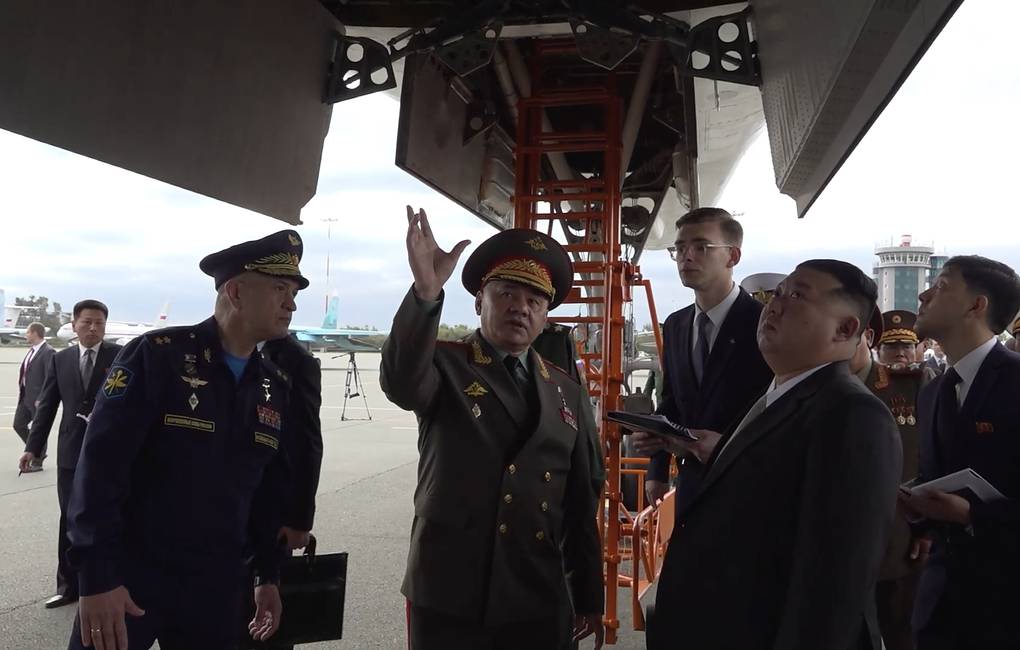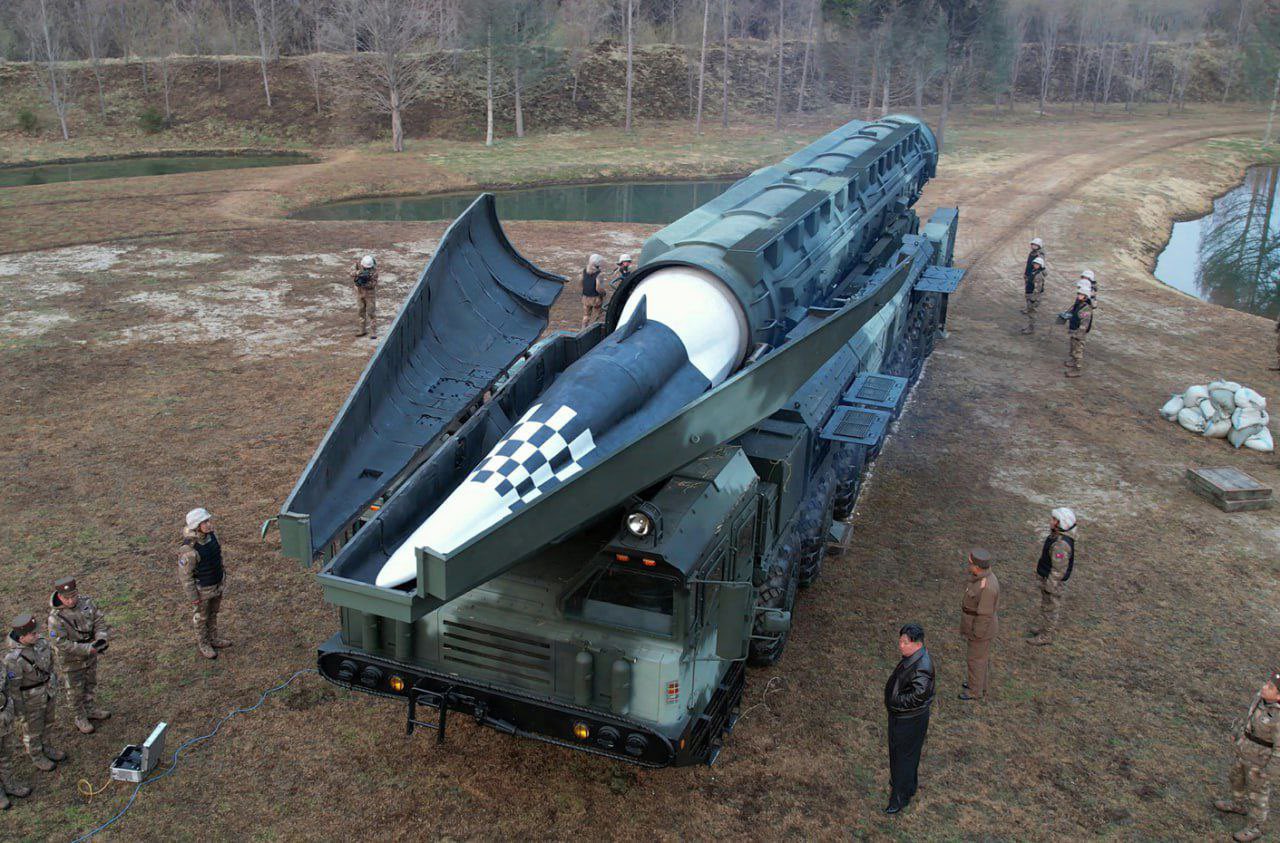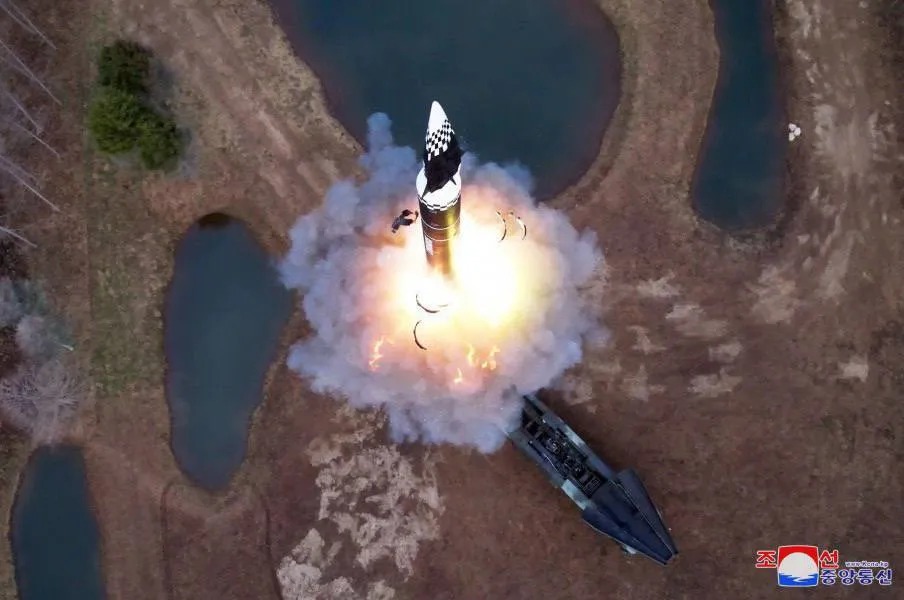Hwasong-16B HGV: North Korea’s ‘Deadly’ Hypersonic Missile Has Russia Written All Over It: OPED

Military and “defense technical” cooperation, being the centerpiece of reenergized Russian and North Korean diplomatic relations, can be concluded to have found itself in the latter’s strategic weapons systems. Pynongyang’s latest weapon, the Hwasong-16B hypersonic glide vehicle (HGV), which was tested recently, is likely to have received Russian technical assistance.
The highly complex technology is beyond the current capacity of North Korea’s heavily sanctioned scientific and defense industrial base. An overview of the trajectory and agendas of the two countries’ recent diplomacy lends credence to this theory.
The two countries have closed ranks by finding solidarity over what they perceive as US and Japanese strategic confrontation and sanctions on their economies. North Korea had long opposed the North Atlantic Treaty Organization (NATO) and directly blamed Europe and the US for provoking the war. Moscow, meanwhile, has sided with Pyongyang before South Korea and the US, asking for an end to the United Nations sanctions on the North.
Russia Imports North Korean Ammunition
Reports of Russia importing artillery rounds from North Korea since late 2022 were followed by Russian defense minister Sergei Shoigu visiting North Korea in July 2023, where he was shown the country’s latest indigenously developed drone and missile systems.
This was followed by Kim Jong-un himself visiting Russia in September 2023. There, he was given access to a top air base in the Amur region and shown the Tu-160 strategic bomber and Kh-BD missile, which has a range of over 6,500 kilometers.

Russia requires North Korea’s surplus ammunition to feed either its current needs in the ongoing war or the bigger war it has long anticipated with NATO in the long run. Either way, it unburdens its own military factories.
Therefore, it is clear that defense is emerging to define the Russian and North Korean partnership, which was earlier characterized by diplomatic and strategic support.
The two countries can be expected to have reached an arrangement where Moscow lends its technical expertise in missile technology in return for cheap, mass-produced but critical everyday battlefield ammunition. The firing of the Hwasong-16B comes after the above developments and can be seen in that context.
Even more interestingly, Russia has offered a similar defense-technological heft to Iran as well. (You can read more on the unprecedented Russo-Iranian cooperation here).
The driving political and strategic thought with Tehran, too, is the same as North Korea – a shared rising animosity with the US and NATO.

North Korean HGV
The missile, which North Korea reports is also called the solid-fuelled Hwasong-16NA Intermediate-Range Ballistic Missile (IRBM), has a “newly developed hypersonic gliding flight warhead.” But hypersonic missiles are incredibly complex and technically challenging systems, and Pyongyang simply doesn’t have the advanced scientific and defense industrial base required to produce and test many of the systems and sub-components.
Primarily, controlling an HGV that is released by a launch vehicle into the atmosphere is extremely difficult. Without talking specifically about Russian-North Korean cooperation, former director of the Defence Research Development Organization (DRDO) Research and Development Establishment (R&DE) laboratory, Dr. S. Guruprasad, said that it’s a complex technology involving sophisticated and difficult “material sciences and computational fluid dynamics.”
“Moreover, a country also needs a hypersonic wind tunnel test facility. It is difficult to imagine any nation developing an HGV without such scientific and industrial setup under heavy sanctions,” he explained. Guruprasad also recalled how, during an earlier trip to South Korea as a part of a delegation, the debris and fragments of North Korean missiles displayed by the host were of Russian and Chinese origin.
HGVs can significantly alter their trajectory post-release, making them difficult to intercept by an adversary’s air defense systems. The operational principle of HGVs, which can carry both conventional and nuclear payloads, is similar to Maneuverable Reentry Vehicles (MaRV).
But HGVs detach from their rocket boosters shortly after launch. MaRVs, on the other hand, are released well outside the earth’s atmosphere, well into space, and can maneuver only during the terminal stages of the flight, which is during descent before impact. MaRVs maneuver using control and thrust vectors around the ‘kill vehicle.’

Nascent System
The system, however, itself seems to be in a development stage, going by the North Korean statement. KCNA said that the “test-fire was aimed at confirming the designed technical specifications of the new-type intermediate-range hypersonic missile as a whole and verifying the reliability of this weapon system.”
This involved “verifying the characteristics of gliding-skip flight orbit and cross-range maneuvering capability of the hypersonic glide vehicle (warhead) while confining its range to less than 1,000 kilometers.” For “safety,” the military “forcibly controlled the speed and altitude” by “delaying the start-up of the second-stage engine and rapidly changing the flight orbit in the active region.”
The HGV (or the “hypersonic glide warhead,” as the North Korean reports called it) separated from the missile. It reached its first peak at 101.1 kilometers and the second at 72.3 kilometers while making the 1,000-km-long flight as scheduled to hit the waters of the East Sea of Korea accurately.
- Questions and Answers
- Opinion
- Motivational and Inspiring Story
- Technology
- Live and Let live
- Focus
- Geopolitics
- Military-Arms/Equipment
- Ασφάλεια
- Economy
- Beasts of Nations
- Machine Tools-The “Mother Industry”
- Art
- Causes
- Crafts
- Dance
- Drinks
- Film/Movie
- Fitness
- Food
- Παιχνίδια
- Gardening
- Health
- Κεντρική Σελίδα
- Literature
- Music
- Networking
- άλλο
- Party
- Religion
- Shopping
- Sports
- Theater
- Health and Wellness
- News
- Culture

